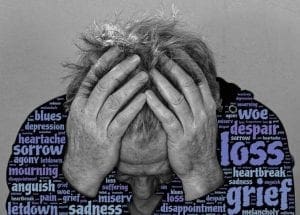 The Cycle Of Anger
The Cycle Of Anger
Often when we are angry, the only thing we are aware of is our angry mood. It takes over our bodies, our thoughts and our feelings. We can become so consumed by anger and lose ourselves in the intensity of the moment. This intensity depends on the situation as anger always appears on a continuum ranging from mild irritation at one end to extreme rage at the other.
How we react depends on the provocation itself as well as our coping mechanisms. If our coping mechanisms are faulty, and are geared towards using power and control as a means to resolve conflict, and, we find ourselves repeatedly caught up in conflict situations, you can be certain that The Cycle of Anger is replaying itself over and over in our life.
The Cycle of Anger depicts anger as beginning with a trigger, which leads to negative thoughts, emotions, physical symptoms, and a behavioral response. The Cycle of Anger is a way of demonstrating the patterns that follow problem anger around.
Whilst we my think the anger is gone once the storm has passed, that is usually not the case. The effects of anger don’t disappear when the abusive behaviour stops as there is a whole process of recover and repair that has to happen before things return to normal. It’s an emotionally draining and exhaustive process to continually be caught up in, and over time will erode even the most committed of relationships.
The Cycle of Anger demonstrates how uncontrolled anger goes round and round. It’s a cycle with no end, only the relentless sequence of negative emotions, feelings and behaviours. It starts with a Triggering Event, this is any event or situation that sets off the anger and leads to the Escalation Phase which includes negative thoughts and emotions, as well as the physical signs of anger in the body.
These thoughts and responses lead to the Crisis or Explosion Phase being the negative behaviour associated with the anger. After this comes the Recovery Phase where calm is restored and the immediate crisis is over. The final phases include the Remorse Phase where guilt and regret remain for the negative behaviours and attempts to repair the damage are made, and finally the Calm Phase where everything is normal for a period of time before another Triggering Event starts the cycle again.
If we want to stop being caught up in this Cycle of Anger we need to understand how it plays out in the context of our own lives, recognise the underlying feelings sitting beneath the anger and learn how to focus our anger in the healthy ways.
If you see yourself locked into the Cycle of Anger to resolve conflict then enrolling in one of online anger management courses will help unlock the skills you need to move away from this and towards healthy conflict management skills.


